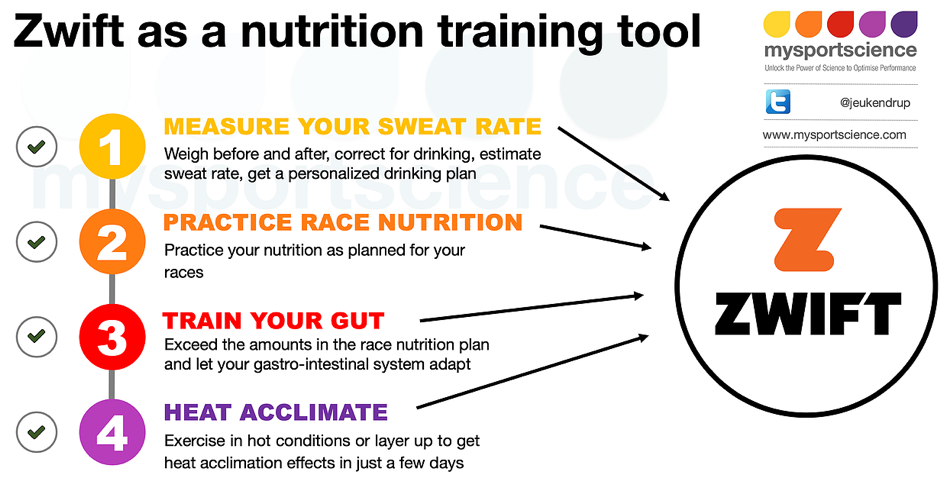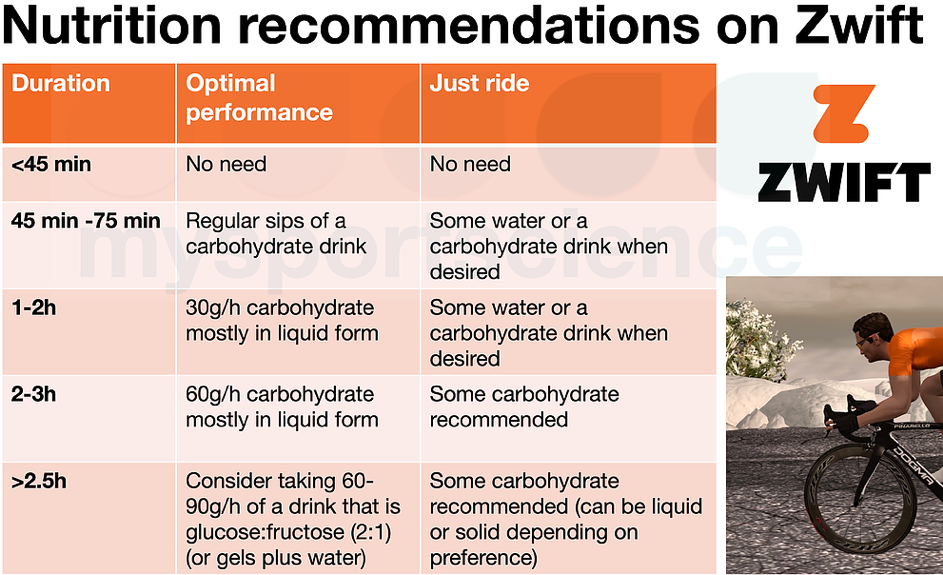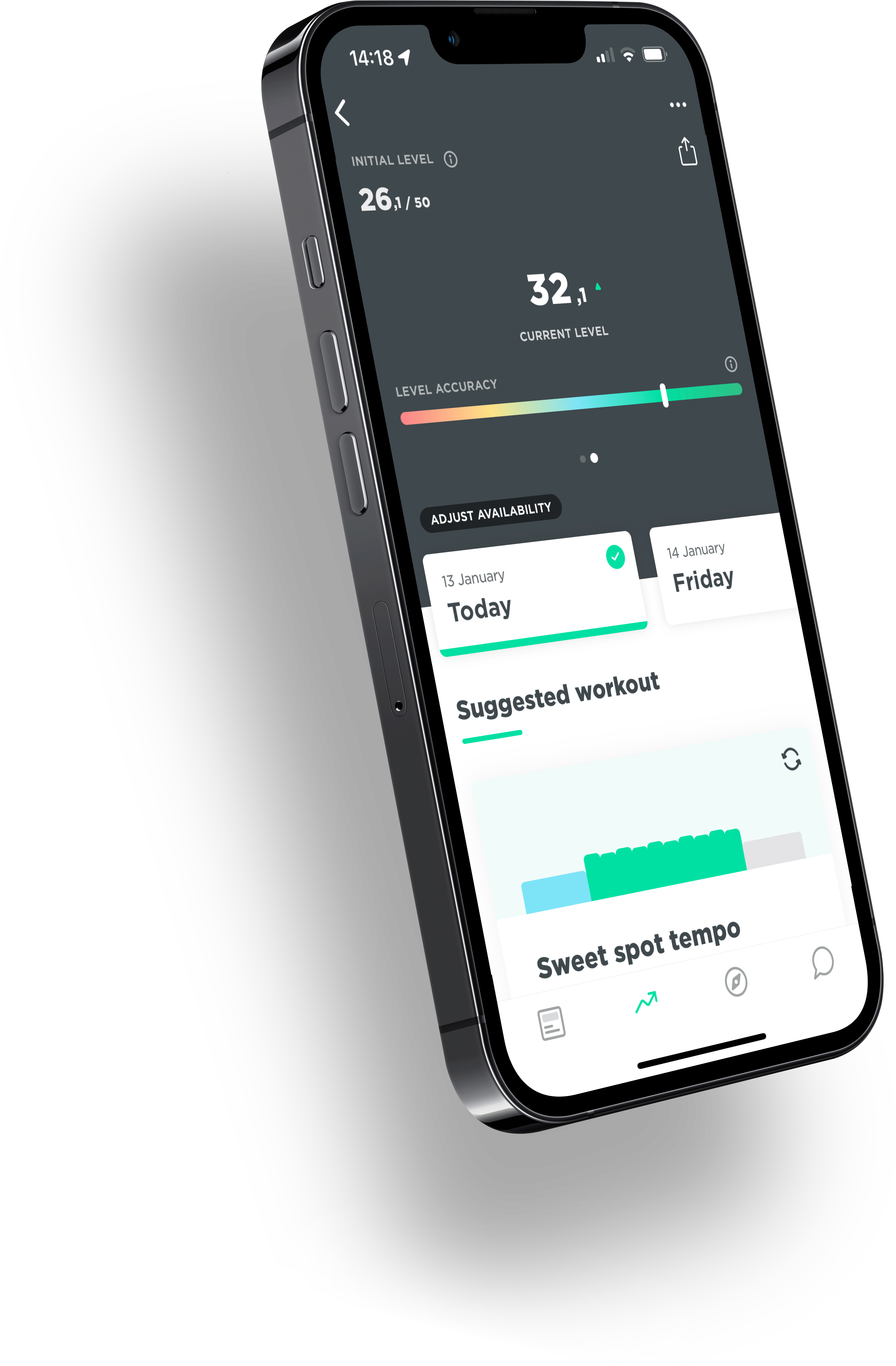Since in winter there are no road races to ride, the virtual bicycle racing platform of Zwift (and other platforms) is a very popular alternative. In this article we try to give you the best tips and tricks so you can get the best results. We cover power output, temperature regulation, warming-up and the difference between the power you can push indoors and outdoors. Of course we assume that you don’t cheat by setting your weight lower than it actually is!
The courses on Zwift are characterized by their extreme character, especially the start is usually incredibly hard. The first few minutes you will ride (far) above your FTP, so it is important to be prepared for this when you decide to ride a virtual race. Think of it as a cyclocross race start: full throttle from the gun! Right from the start, the racing is often just below the threshold point, spiced up with some climbs and other hard stretches above the FTP. Luckily most races usually only last around 40-60 minutes. The finals are hard and the podium is often decided in a sprint. However, this sprint is longer than on the road as the last kilometers are really at full speed.
However, keep in mind that you never keep your legs still and always will have pressure on the legs, so all in all it can be really hard! See for example the heartbeat and power graph of a course below. You can clearly see that you never get to pedal quietly and spend quite some time near the threshold HR (dotted line).
Nutrition during Zwift Races
So races on Zwift are very hard and your power output will often be close to your FTP, so you will burn muscle glycogen (sugars stored in your muscles) throughout the race. This is not bad, as long as this supply of glycogen is full when you start, otherwise you run the risk of getting hungry right away. So beforehand it’s important to have eaten a good meal rich in carbohydrates. Depending on the time you start racing, try to eat your last meal at least 2 hours before the start. During the warm-up you can eat a small snack (e.g. a banana or a sports bar) so that the sugars are immediately available from the start of the race.
Because Zwift races courses are generally not very long, you might be tempted not to have extra food available during the race. However, with a good warm-up and cooling-down you’ll easily spend an hour and a half in the saddle. Below you’ll find some general guidelines, so be aware of how long you expect to be busy.
After riding a Zwift course it is especially important to replenish your muscle glycogen immediately. This can be done by consuming some rapidly easily sugars within half an hour after the race. This can be a coke or some wine gums, but also some fruit (which has a high glucose-fructose content, which is good for recovery). Depending on the next training sessions you can also choose to take some proteins directly, for example if you have a strength training planned at the end of the day.
Text continues below the images
Images via Asker Jeukendrup, www.mysportscience.com
Heat management: keeping the body cool.
Since we ride on indoor trainers, there is no wind, which is actually quite nice because you never have to find a headwind. However, that wind takes care of most of the cooling of our body. During exertion, the measured power is only 20-25% of the total power that the body produces, so muscle contractions are not that efficient. The remaining power is released in the form of heat, so the body produces quite a large amount of it during exercise. You have to get rid of this heat in order not to overheat and see your power fall away. Already a small increase in your skin and core temperature will immediately and negatively affect your performance! The cooler you can make the space in which your Zwift contraption stands, the less this decay!
So really make sure you have enough ventilators blowing or windows open! If you see Zwifting purely as training (and not as a goal in itself), you can also choose to take a leaf from the book of heat acclimatization. By performing regularly in the heat over a period of about 2 weeks you will acclimatize to this and you will be able to perform well in the heat later. However, always make sure that you do not make this ‘heat stimulus’ too big, the heat management of your body is easily kicked out of balance, with various negative consequences.
As a last pro tip related to heat, it is smart to pre-cool the body well in advance, this can be done for example by eating an ice cream 5 minutes before the start! If you have cooling vests, be sure to use them! The cooler you stay during the race, the better your power levels can be maintained and the better your performance will be.
Warming-up and cooling down, getting ready to race.
Because the start of a Zwift race determines everything, a good warm-up is crucial. Take your time for this! We recommend the following warm-up protocol:
- 10 min quiet pace, 5 min “Steigerungen”, where you slowly step up the pace until you ride at your FTP in the last minute.
- 5 min recovery, loosen the legs
- two, 15-second sprints with 2 minutes rest in between
- 8 minutes quiet pace
Then you can get off your bike for a few minutes and make sure that everything is alright and you are ready for the fast paced start! After your race it is important to lower your heart rate after that final sprint. Ride on low power and intensity for at least 10 minutes (but preferably a bit longer) after the finish. This will ascertain that the lactate that you produced during the race can be broken down again and that you don’t have too heavy legs in the next few days.
indoor versus outdoor, the short story.
Many riders complain about the fact that they can only pedal with much less power inside compared to outside. Not much scientific research has been done on this, but the conclusion that can be drawn from these studies is that cycling outside has a much higher variability in power and less static load than cycling inside. We will come back to this extensively in a different blog post.
Cooling by means of the wind lowers the temperature of the body which ensures better performance outside than in a situation indoors that is not properly cooled. If cooling is done properly, there is no significant difference between performance indoors or outdoors! So don’t forget that ice cream, cooling vest and fan the next time you start a Zwift session!
Zwift tactics.
First of all, be ready for a hard start, as described above, so a good warm-up is vital. Zwift has done its utmost to mimic the so-called draft effect, which means that you can benefit from driving closely behind somebody else. So make really good use of this, you can tell by your posture on the bike if you’re well in the draft; if you’re sitting upright then you’re well hidden, if you’re riding the virtual you low in the handlebars then you’re riding in the wind!
As your Zwift level increases, better bikes and wheels become available. This material can provide a better aerodynamic or lighter bike, so choose the smartest material for each race. In about an hour, the fastest bike can save more than a minute compared to the slowest! That brings us right to the point of trail exploration. There are an awful lot of routes on which you can ride and each route has its own peculiarities. A short course exploration on the internet is often really worthwhile, so that you can see where it is smart to sit at the front. Keep in mind that just after a climb the peloton (just like in real life) goes on a ribbon and gaps can appear, so always pay attention!
Next to that there are of course power-ups in Zwift, actually 3 important ones:
- Spring: this will lighten your resistance by 9.5kg for 15 seconds, so use it on the steepest stretches of a climb!
- Truck: makes your draft effect 3x bigger for 30 seconds, so you can take the pressure of the pedals just a little bit, without dropping out of the peloton.
- Aero helmet: makes you 25% more aerodynamic for 15 seconds, so you can reach high speeds with high power. Super handy in the final sprint!
Because Zwift racing is really hard, we advise you to not do too many races every week, especially because every race brings a certain mental strain. So think carefully about how a race fits in your training week, always make sure it’s balanced by steady endurance training.





